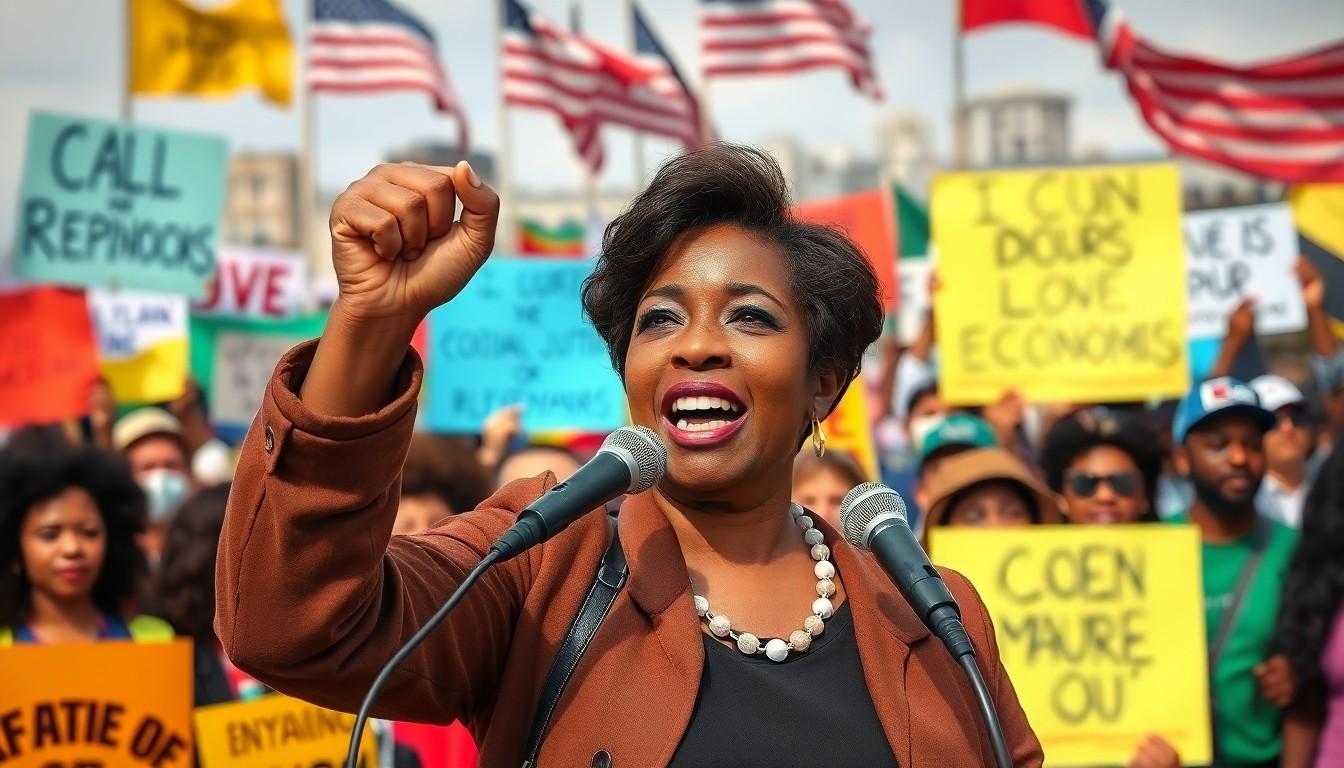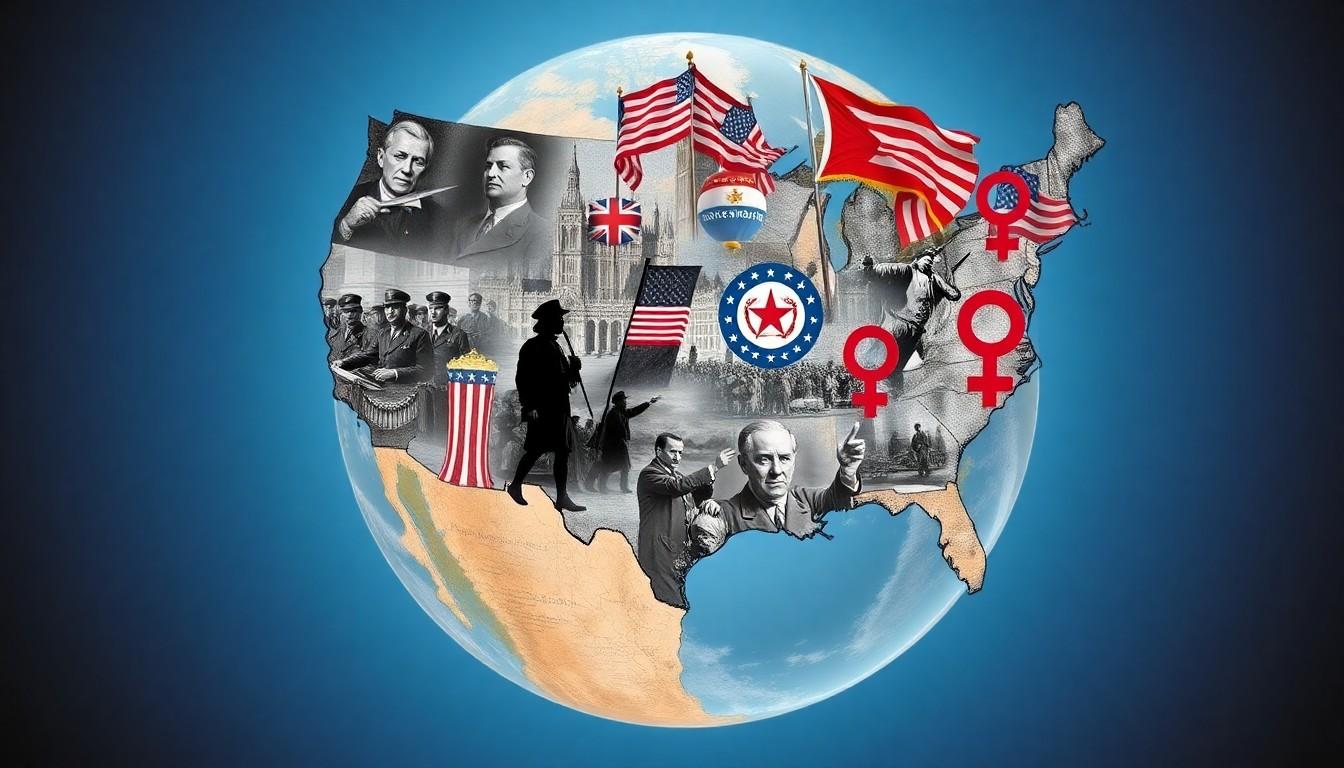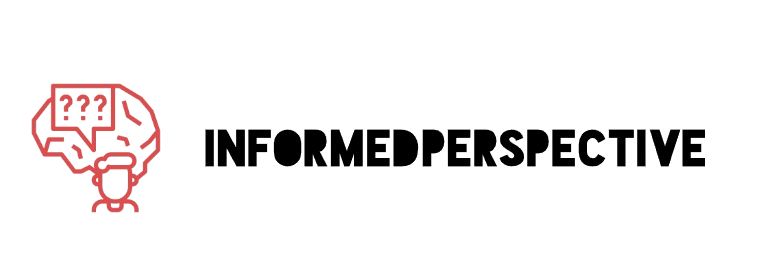The Best Fluffy Pancakes recipe you will fall in love with. Full of tips and tricks to help you make the best pancakes.

Political Reasons Behind Decisions: Unraveling the Circus of Governance and Power
Politics can feel like a never-ending circus, complete with clowns, acrobats, and the occasional lion tamer. But behind the colorful antics lies a complex web of political reasons that shape our world. From policy decisions to international relations, understanding these motivations is crucial for anyone who wants to navigate the political landscape with confidence.
Whether it’s the quest for power or the fight for justice, political reasons drive leaders and citizens alike. They influence everything from local elections to global treaties. So buckle up and get ready to dive into the fascinating world of political motivations, where every decision has a story and every story has a punchline.
Overview of Political Reasons
Political reasons encompass a variety of motivations that drive individuals and groups in their decision-making processes. Understanding these motivations reveals how they influence governance and policy outcomes. Common political reasons include the quest for power, economic interests, and the desire for social justice.
Different stakeholders, such as political parties or interest groups, seek to gain advantages through strategic alliances or public support. Legislative decisions often reflect the need to appease constituents, balancing the demands of voters against the priorities of party agendas. Economic incentives frequently motivate policymakers to favor certain industries, shaping regulations and funding allocations to benefit specific sectors.
Values and ideologies also play significant roles in political reasoning. For instance, a commitment to human rights can guide foreign policy, while conservation efforts may influence environmental regulations. The interplay between different political forces creates a complex landscape where decisions can produce far-reaching consequences.
International relations further illustrate how political reasons manifest on a global scale. Nations may engage in diplomacy or conflict based on national security concerns or resource availability. Trade agreements often arise from a combination of economic interests and political pressures, reflecting broader geopolitical strategies.
Cultural factors contribute to political reasons as well. Social movements and public sentiment can shift priorities, compelling leaders to adapt policies to align with changing views. The dynamics within political environments require continual assessment to grasp how various reasons impact legislative outcomes and public discourse.
Each of these reasons intertwines with others, creating a multifaceted understanding of political behavior and decision-making processes. Exploring these layers provides insights into the motivations that drive political actors and their strategies.
Historical Context

Understanding historical influences provides insight into political decisions. Various key events and evolving ideologies shape the landscape of politics today.
Key Events Influencing Political Decisions
Numerous events throughout history significantly shaped political landscapes. The American Revolution, for instance, established foundational democratic principles, inducing revolutionary movements worldwide. World Wars I and II forced nations to reassess alliances and strategies, impacting national security policies. The Cold War catalyzed political polarization, dictating foreign and domestic policies in numerous countries. Economic crises also stir political change; the Great Depression prompted government interventions and welfare state expansions. Each of these pivotal moments contributed to defining the political context, showcasing how history intertwines with contemporary political reasoning.
Evolution of Political Ideologies
Political ideologies evolve in response to societal needs and historical events. Liberalism emerged in the Enlightenment era, emphasizing individual rights and freedoms, influencing modern democracies. Conservatism, growing as a reaction to rapid social changes, underscores tradition and stability. Marxism arose in the 19th century, advocating for class struggle and equitable resource distribution, affecting global revolutions. Feminism, gaining traction in the 20th century, pursues gender equality, reshaping policies on social justice. Each of these ideologies reflects historical contexts, revealing how deeply they impact political decision-making processes today.
Current Political Landscape
The current political landscape showcases a blend of traditional and emerging forces shaping governance. Significant shifts in party dynamics reflect diverse motivations driving political agendas.
Major Political Parties and Their Motivations
Democratic and Republican parties lead the U.S. political scene, each with distinct goals. The Democratic Party often emphasizes social justice and equity, advocating for policies that benefit marginalized communities. Conversely, the Republican Party typically prioritizes economic growth and individual liberties, focusing on reducing government intervention. Smaller parties, such as the Green Party and Libertarian Party, also influence discussions around environmental and personal freedoms. Each party’s platform seeks to attract specific voter demographics, aligning their policies with constituent values while battling for electoral advantage.
Influence of Public Opinion on Political Reasons
Public opinion exerts considerable influence on decision-making processes. Politicians closely monitor polls and surveys to gauge voter sentiment, often adjusting their positions accordingly. Shifts in public attitudes can push issues like healthcare or climate change to the forefront of political discourse. Grassroots movements also play a critical role, mobilizing citizens and amplifying voices demanding action. Engagement through social media platforms enhances this trend, allowing constituents to directly impact political discussions. Ultimately, leaders who align closely with public concerns can secure electoral success, reinforcing the strength of democratic participation.
Case Studies
Case studies reveal the multifaceted political reasons driving decisions across various contexts. Examining legislation and international relations illustrates the complexity of motivations involved.
Political Reasons Behind Major Legislation
Legislation often stems from the interplay of power struggles and social movements. Economic interests play a critical role in shaping policies that affect public welfare, healthcare, and education. Groups advocating for environmental protections frequently push legislative changes, reflecting societal values. In many instances, party agendas drive these legislative efforts. For example, the Affordable Care Act aimed to expand healthcare access while also addressing economic disparities. These influences highlight how lawmakers navigate competing interests and strive for consensus in a dynamic political landscape.
Political Reasons in International Relations
Diplomacy and international agreements emerge from political reasons that prioritize national security and economic interests. Trade deals like NAFTA illustrate how countries seek mutual benefits while addressing domestic pressures. Alliances often shift based on strategic considerations, demonstrating the fluid nature of global politics. Social movements within countries can influence foreign policy, as public sentiment shapes leadership decisions. For instance, support for human rights has prompted nations to reassess their foreign relations with countries suffering from oppression. Such factors underscore the interconnectedness of local motivations and international diplomacy.
Challenges and Criticisms
The complexities of political motivations often invite scrutiny and debate. Criticism frequently revolves around claims of partisanship and its impact on decision-making.
Allegations of Partisanship
Allegations of partisanship arise when political parties prioritize loyalty over objective governance. Observers often cite examples where party affiliation influences legislative outcomes, leading to polarized perspectives. Many accuse leaders of neglecting constituent needs in favor of party agendas. Reports indicate that the divide between Democrats and Republicans further complicates collaboration, limiting bipartisan initiatives. Citizens increasingly express frustration over the lack of unified action on pressing issues.
Impact on Governance and Policy Making
The impact of political maneuvering on governance and policy making remains significant. Laws and regulations frequently reflect the interests of powerful groups rather than the public good. Stakeholders, such as lobbyists and interest groups, exert considerable influence on legislative processes. As a result, policies may favor specific industries or corporations, raising concerns about equity and representation. Public trust often declines when citizens perceive favoritism in policy development. These factors contribute to a growing sentiment that governance is driven by political strategy rather than genuine concern for societal needs.
Conclusion
Understanding the political landscape requires a deep dive into the motivations that drive decision-making. From the quest for power to the fight for social justice these reasons shape policies and influence governance at every level. Recognizing the interplay between historical events and contemporary dynamics allows for a more nuanced view of political behavior.
As citizens engage with these complex narratives they contribute to a democratic process that reflects diverse interests and values. The ongoing evolution of political ideologies and the rise of grassroots movements underscore the importance of public sentiment in shaping policy. Ultimately grasping these political reasons is vital for informed participation in the democratic process.
